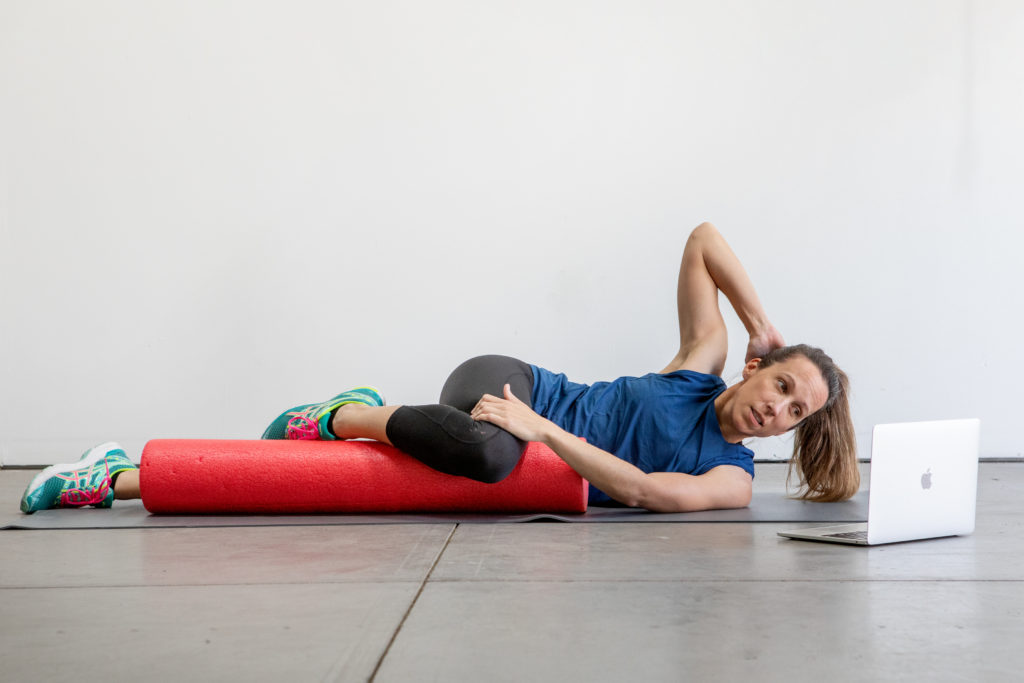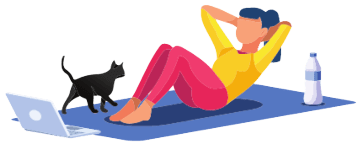Are you like many fitness enthusiasts—you have a foam roller, or maybe a set of massage balls, and you’re not quite sure why you have these fitness tools? Maybe you heard that foam rolling is good for you, but when you tried it you were left scratching your head. Or perhaps the experience wasn’t pleasant, and it left you wanting never to try it again.
Dig your foam roller out of the closet and let’s explore its potential.

First, the truth about foam rolling: expect a level of discomfort, initially. As an exerciser, you know that for something to change, there simply must be some unease. If it doesn’t challenge you, it’s not going to change you. It’s the same with using a roller or massage ball.
Foam rolling is, primarily, a complimentary tool to massage. It was designed to assist with keeping your soft-tissues (fascia and muscles) pliable and relaxed between visits to a skilled massage therapist, and, once you’re experienced at rolling properly, rolling may act as a form of self-myofascial release.
Why roll? Foam rolling frees and softens the tissues, promoting relaxation, and improving blood flow to the areas rolled. With regular practice, a roller reduces trigger points, lessens tightness, and can improve range of motion. Recently, after a workshop where I taught a few techniques for rolling, a participant reached out to me the next day. Excitedly she said, “After the class, I was so relaxed that I took an hour-long nap.” Well, who doesn’t need a nap these days? And another client shared with me that frequent rolling improves her daily functioning, making it easier to care for her pets.
What style of roller? There are many choices. Select a roller with the right density for your needs. If you’re new to rolling, use one with a softer, therapeutic-style density. As you incorporate rolling into your routine, you may need a heavier, denser roller to reach the deeper tissues. Many people use a variety of rollers and massage tools. Think of it as building up your home-based gym. Rollers come in various lengths, too. Most are 36” in length, by 6” diameter. Other rollers are 18”. For my personal use, I have a 36” therapeutic density and an 18” firm density, as well as an assortment of smaller massage balls.
How to roll? This is the most important part. Using a foam roller takes practice, and there are a few guidelines to follow, as well as a few health conditions that contraindicate rolling. Seek out a skilled fitness professional to learn how to effectively use rolling tools. And anyone with a medical condition should speak with a health care provider before rolling.
Where to roll? Once you’re ready to start, set a yoga mat on the floor, and sit down with the roller. There are six areas I encourage my clients to roll and they include, the lower legs, the upper legs, the gluteals and hips, the side of body at the lats, and the chest. The rule of thumb is to move slowly, easing the roller along at one inch per second. Roll the entire muscle, then roll back down the muscle. As you roll, focus on the soft tissues only, and don’t cross over any joints. Remember, foam rolling should elicit some discomfort. Think of a scale of 0-10. The roller should give you feedback in the 5-8 range.
When to roll? Whenever you have time—before, during, or after exercise. Regular foam rolling should be a part of your exercise program.
I hope you’ll give foam rolling a try and find out for yourself how this tool can enhance not only your exercise routine but improve your function throughout the day, making your every stride and reach easier.

Good post. I learn something totally new and challenging on blogs I stumbleupon everyday. Its always useful to read through content from other authors and practice something from other sites.
Everything is very open with a clear description of the issues. It was really informative. Your website is useful. Thanks for sharing!
Thank you for reading. I hope you will visit my blog often.
Thank you for reading.